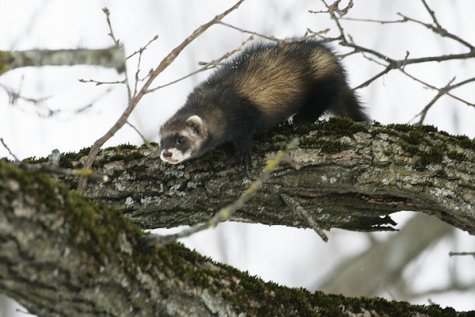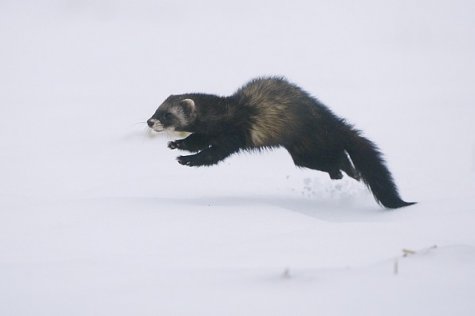Polecat heat
Photos: Arne Ader
Translation: Liis
Polecat.
| Polecat, European polecat | Tuhkur e. metstuhkur e. tõhk | Mustela putorius |
The polecat can frequently be our "hidden” neighbour, living in outbuildings or close to them, even in settlements and cities, always preferring rather damp places. Polecats have their heat period in March-April, and the otherwise secretive nocturnal creature can then be seen even in daylight.
The weight of a fully grown male may be twice that of an adult female. It has a body length of a half metre, one fifth of which is the tail. With its long, slender body it can easily get close to its prey. Polecats are more common in southern Estonia than in the northern part.
The polecat is native in Estonia. Seeing to its face, it can’t be mistaken for any other of the weasel family species: the tip of the nose, the edges of ears and the area between the eyes and the ear are white – a quite attractive mask. Through the dark and rather sparse guard hairs of the fur coat the pale yellow underfur is visible, but it has no winter camouflage colour.
Juveniles have a dense, dully yellow coat during their first winter.
Polecat.










